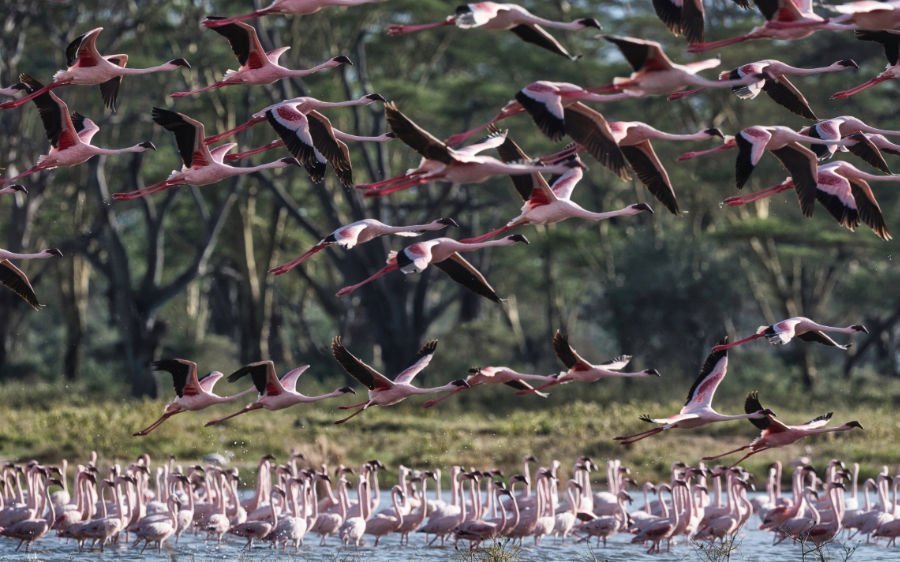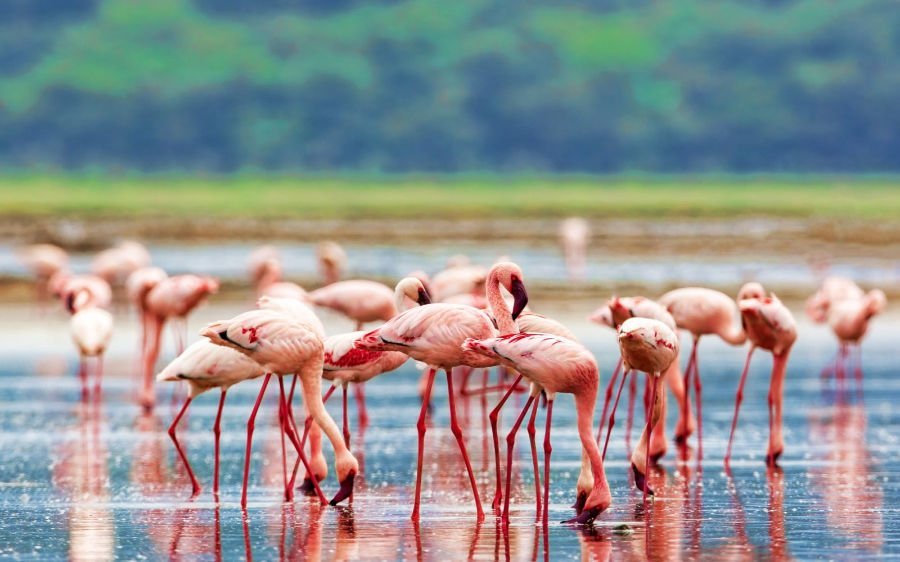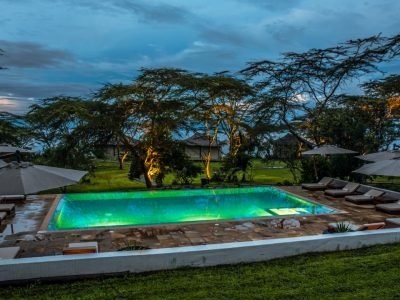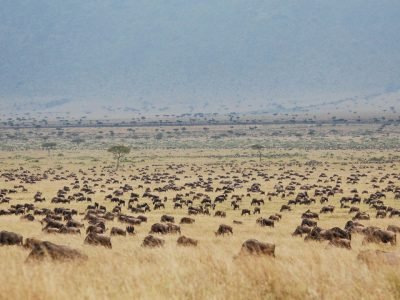Lake Nakuru National Park is a breathtakingly beautiful and thriving natural marvel. The millions of flamingos who make their home on the tiny alkaline lake have made it renowned.
There are 188 square kilometres of protected land thanks to the creation of this park in 1961.
Due to its manageable terrain, the Park is accessible by car and enjoyable to explore on wheels. Some readily identifiable topographical markers include the prominent hills of Enasoit, Honeymoon, and lion hill ridge. The gorgeous terrain and golden acacia forests are dotted with over 550 different plant species.
After a previous fire in the Park, the Euphorbia tree species are now being integrated into the park’s ecosystem. The 2011 floods greatly enlarged the lake and disrupted the lake’s ecology by altering the chemical balance that supports it.
Wildlife in Lake Nakuru National Park, Kenya

The Kenya Rift Valley is home to Lake Nakuru National Park, which is hemmed in by mountains on all sides. Flamingos, black rhinos, lions, giraffes, and both waterbuck subspecies, as well as cheetahs and Goliath herons, are just some of the wildlife that calls this area home.
The park is home to around 70 southern White Rhinos and the greatest population of Eastern Black Rhinos. About sixty-five Nubian ( endangered Rothschild’s) giraffes have been relocated since a programme began in 1977.
The rock hyrax thrives in rocky areas because of the variety in terrain. Leopards and lions are two of the animals that are currently in the area. Spotted and striped hyenas, serval cats, silver-backed and side-stripe jackals, mongooses, civets, and genets are just some of the other animals that call this area home. There are also zebras, giraffes, and buffalo in the area. Sorrowful olive baboons and intriguing black-faced vervet monkeys are the most often seen primates, while regal bands of colobus monkeys frolic proudly through the treetops.

The Baboon Cliff, Out of Africa Hill, and Makalia waterfalls are all fantastic places to go on a picnic if you’re looking for a place to kick back, relax, and take a deep breath of fresh air. Herds of beautiful impalas, hairy waterbucks, and the timid bushbuck live in the acacia forests.
In all, there are over 550 distinct plant species, including the largest euphorbia forest in Africa, picturesque scenery, and golden acacia woodland.
Birdlife and Bird watching Safaris

If you’re a bird enthusiast, you should definitely check out Kenya’s Lake Nakuru National Park. There are 535 known species of birds, and 18 of them are endangered. The full list is on Avibase – Lake Nakuru National Park. Millions of greater and lesser flamingos, as well as the African fish eagle, pelican, Goliath heron, secretary bird, hamerkop, pied kingfisher, grebe, and Verreaux’s eagle, may be seen in this park at any one moment. Many of these birds populate the area immediately next to and around the lake.
The Lake used to harbour over 1.5 million flamingos, however, since the floods of 2011/12, the Flamingo populations have dropped because of an abundance of water that has diluted the alkaline levels necessary to sustain the algae the birds eat. It has also been discovered that there has been an increase in underground sources that also contribute to the increase in water levels.






